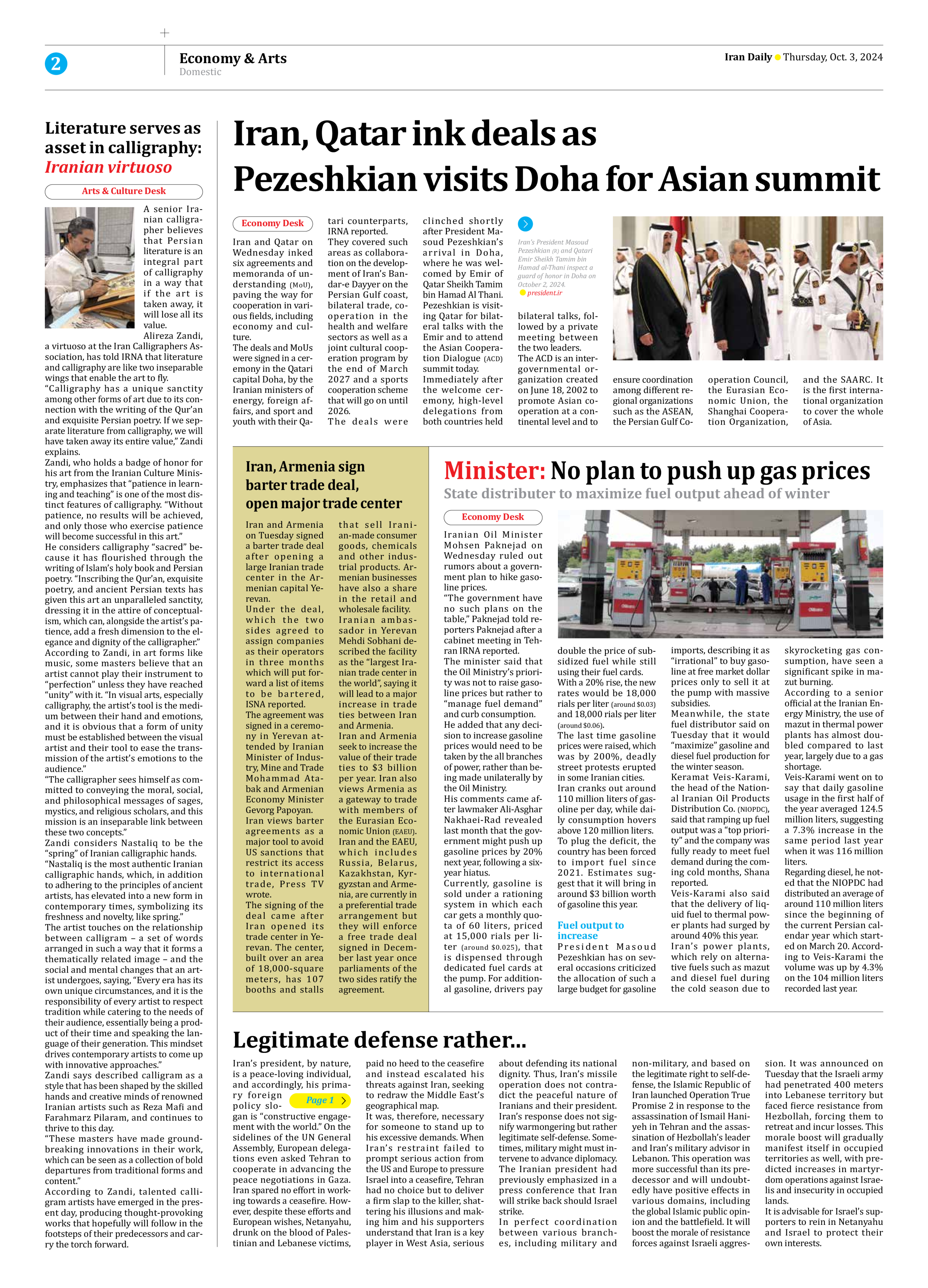
Minister: No plan to push up gas prices
State distributer to maximize fuel output ahead of winter
Iranian Oil Minister Mohsen Paknejad on Wednesday ruled out rumors about a government plan to hike gasoline prices.
“The government have no such plans on the table,” Paknejad told reporters Paknejad after a cabinet meeting in Tehran IRNA reported.
The minister said that the Oil Ministry’s priority was not to raise gasoline prices but rather to “manage fuel demand” and curb consumption.
He added that any decision to increase gasoline prices would need to be taken by the all branches of power, rather than being made unilaterally by the Oil Ministry.
His comments came after lawmaker Ali-Asghar Nakhaei-Rad revealed last month that the government might push up gasoline prices by 20% next year, following a six-year hiatus.
Currently, gasoline is sold under a rationing system in which each car gets a monthly quota of 60 liters, priced at 15,000 rials per liter (around $0.025), that is dispensed through dedicated fuel cards at the pump. For additional gasoline, drivers pay double the price of subsidized fuel while still using their fuel cards.
With a 20% rise, the new rates would be 18,000 rials per liter (around $0.03) and 18,000 rials per liter (around $0.06).
The last time gasoline prices were raised, which was by 200%, deadly street protests erupted in some Iranian cities.
Iran cranks out around 110 million liters of gasoline per day, while daily consumption hovers above 120 million liters.
To plug the deficit, the country has been forced to import fuel since 2021. Estimates suggest that it will bring in around $3 billion worth of gasoline this year.
Fuel output to
increase
President Masoud Pezeshkian has on several occasions criticized the allocation of such a large budget for gasoline imports, describing it as “irrational” to buy gasoline at free market dollar prices only to sell it at the pump with massive subsidies.
Meanwhile, the state fuel distributor said on Tuesday that it would “maximize” gasoline and diesel fuel production for the winter season.
Keramat Veis-Karami, the head of the National Iranian Oil Products Distribution Co. (NIOPDC), said that ramping up fuel output was a “top priority” and the company was fully ready to meet fuel demand during the coming cold months, Shana reported.
Veis-Karami also said that the delivery of liquid fuel to thermal power plants had surged by around 40% this year.
Iran’s power plants, which rely on alternative fuels such as mazut and diesel fuel during the cold season due to skyrocketing gas consumption, have seen a significant spike in mazut burning.
According to a senior official at the Iranian Energy Ministry, the use of mazut in thermal power plants has almost doubled compared to last year, largely due to a gas shortage.
Veis-Karami went on to say that daily gasoline usage in the first half of the year averaged 124.5 million liters, suggesting a 7.3% increase in the same period last year when it was 116 million liters.
Regarding diesel, he noted that the NIOPDC had distributed an average of around 110 million liters since the beginning of the current Persian calendar year which started on March 20. According to Veis-Karami the volume was up by 4.3% on the 104 million liters recorded last year.







